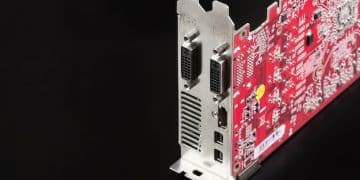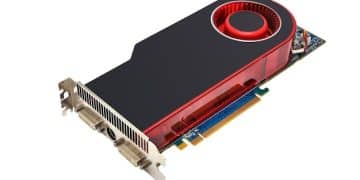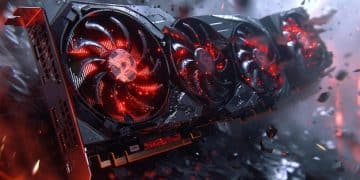AMD RX 7000 Series: Troubleshooting & Performance Optimization
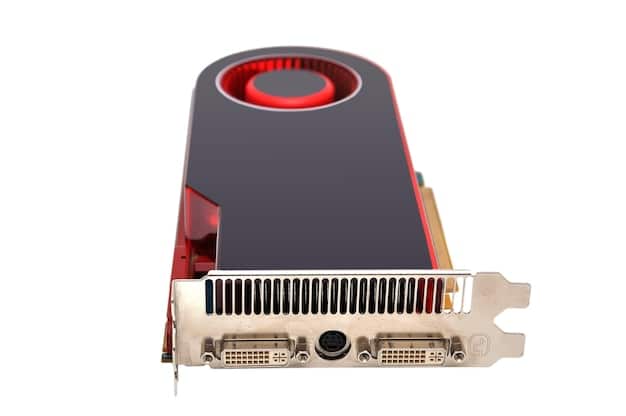
The AMD Radeon RX 7000 series graphics cards offer excellent performance, but users may encounter common issues such as driver problems, overheating, and performance bottlenecks; troubleshooting these issues and optimizing settings can significantly improve the gaming and overall computing experience.
Experiencing issues with your AMD Radeon RX 7000 Series: Troubleshooting Common Issues and Optimizing Performance? Let’s dive into resolving common problems and maximizing its capabilities.
Understanding the AMD Radeon RX 7000 Series
The AMD Radeon RX 7000 series represents a significant leap in graphics card technology. Leveraging the RDNA 3 architecture, these cards offer enhanced performance and efficiency. However, like any advanced technology, users may encounter issues.
Knowing the specifications and capabilities of your RX 7000 series card is the first step in troubleshooting and optimizing performance. Each model in the series has different clock speeds, memory configurations, and power requirements.
Key Features of the RX 7000 Series
The RX 7000 series introduces several key features that contribute to its performance and efficiency.
- RDNA 3 Architecture: Provides a significant improvement in performance per watt compared to previous generations.
- Chiplet Design: Allows for greater flexibility in design and manufacturing.
- Raytracing Support: Offers improved raytracing performance for more realistic gaming experiences.
Understanding these features can help you diagnose issues and optimize your card for your specific needs.
In summary, the RX 7000 series combines cutting-edge technology with impressive performance, but it’s essential to understand its features to effectively troubleshoot and optimize its performance.
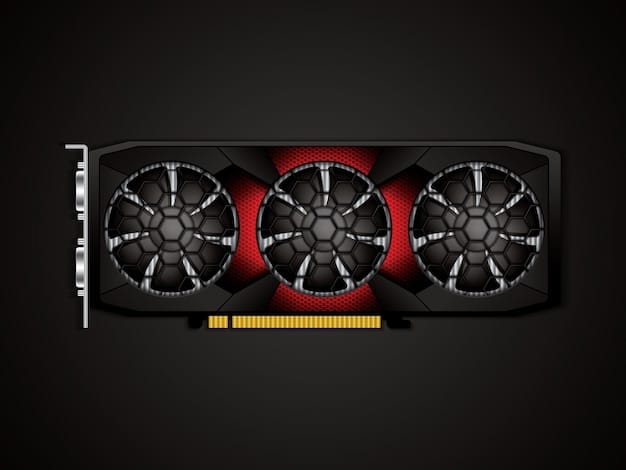
Common Installation Issues
Proper installation is critical for optimal performance of your AMD Radeon RX 7000 series card. Many issues stem from incorrect installation procedures. Ensuring compatibility and proper seating are crucial.
Before you even unbox your new GPU, make sure your system meets the minimum requirements and that your power supply can handle the card’s power demands.
Ensuring Compatibility
Compatibility issues can lead to a variety of problems, from the card not being recognized to system instability.
- Motherboard Compatibility: Ensure your motherboard has a PCIe x16 slot and supports the card’s specifications.
- Power Supply: Verify your power supply unit (PSU) meets the recommended wattage for the RX 7000 series card.
- Driver Compatibility: Use the latest drivers from AMD’s website to ensure compatibility with your operating system.
Addressing these compatibility concerns early on can save you from potential headaches and performance issues.
In essence, addressing compatibility issues during installation can prevent future problems and ensure your RX 7000 series card performs as expected.
Driver Problems and Solutions
Driver issues are a common source of problems with the AMD Radeon RX 7000 series. Outdated, corrupt, or conflicting drivers can lead to performance degradation, crashes, and graphical glitches. To manage these issues effectively you can try the below.
Regular driver updates are essential for maintaining optimal performance and stability. AMD frequently releases new drivers that include bug fixes, performance improvements, and support for new games.
Updating to the Latest Drivers
Keeping your drivers up to date is crucial for resolving bugs and improving performance.
- AMD Adrenalin Software: Use the AMD Adrenalin software to automatically check for and install the latest drivers.
- Clean Installation: When updating drivers, perform a clean installation to remove any conflicting files from previous drivers.
- Roll Back Drivers: If a new driver introduces issues, roll back to a previous version that was stable.
Keeping your drivers current ensures you benefit from the latest optimizations and bug fixes.
Driver management is a continuous process. Regularly updating and properly managing your drivers can significantly improve the stability and performance of your RX 7000 series card.
Overheating Issues and Cooling Solutions
Overheating can significantly impact the performance and lifespan of your AMD Radeon RX 7000 series card. High temperatures can cause thermal throttling, leading to reduced frame rates and potential hardware damage. Monitoring your GPU temperature and implementing cooling solutions are vital.
Effective cooling solutions can prevent overheating and maintain optimal performance. Several options are worth considering.
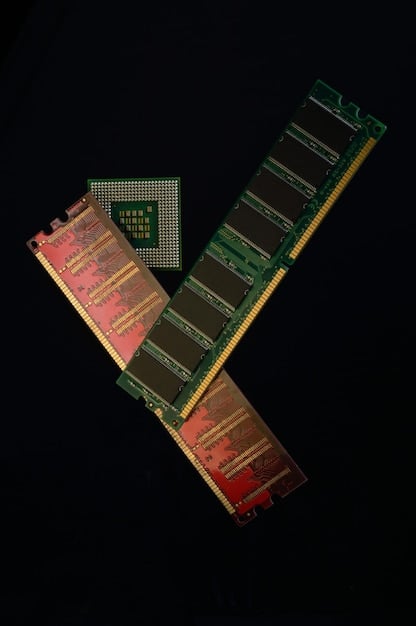
Implementing Effective Cooling Solutions
There are a few cooling mechanisms you can employ to help mitigate overheating.
- Improve Case Airflow: Ensure your PC case has sufficient airflow to dissipate heat.
- Aftermarket Coolers: Consider installing an aftermarket GPU cooler for improved cooling performance.
- Liquid Cooling: Liquid cooling solutions offer superior heat dissipation compared to air coolers.
Overheating is a serious issue that can significantly impact performance and lifespan, so maintaining optimal temperatures is key.
In conclusion, monitoring GPU temperatures and implementing effective cooling solutions are essential for preventing overheating and maintaining the performance and longevity of your RX 7000 series card.
Optimizing In-Game Settings
Optimizing in-game settings can significantly improve the performance of your AMD Radeon RX 7000 series card. Adjusting graphics settings to balance visual quality and frame rates is essential for a smooth gaming experience.
Effective optimization involves understanding which settings have the most impact on performance and adjusting them accordingly. Start by experimenting with different graphics presets and monitoring your frame rates.
Adjusting Graphics Settings for Optimal Performance
Optimize graphics settings for ideal settings.
- Lower Resolution: Reducing the game’s resolution can significantly improve frame rates, especially on demanding titles.
- Adjust Texture Quality: Lowering texture quality can reduce the memory load on your GPU, improving performance.
- Disable Post-Processing Effects: Effects like anti-aliasing and ambient occlusion can be resource-intensive; disable them to boost frame rates.
Optimization is key to finding the right balance between visual quality and performance.
In short, tweaking in-game settings to match your hardware’s capabilities can significantly enhance your gaming experience with the RX 7000 series card.
Addressing Performance Bottlenecks
Performance bottlenecks can limit the potential of your AMD Radeon RX 7000 series card. Identifying and addressing these bottlenecks is crucial for maximizing performance. Bottlenecks can originate from various components.
To resolve bottlenecks, start by monitoring your system during gameplay. Use tools like AMD Adrenalin or third-party utilities to track CPU and GPU usage, memory utilization, and frame rates.
Identifying and Resolving Common Bottlenecks
Here are a few common bottleneck issues users find.
- CPU Bottleneck: An underpowered CPU can limit the performance of your GPU. Upgrade to a faster CPU to alleviate this issue.
- RAM Bottleneck: Insufficient RAM can cause stuttering and frame drops. Ensure you have enough RAM and that it is running at the correct speed.
- Storage Bottleneck: Slow storage devices can cause loading times and stuttering. Upgrade to an NVMe SSD for faster load times and improved performance.
Identifying and addressing bottlenecks is crucial for getting the most out of your RX 7000 series card.
Overcoming bottlenecks is essential for unlocking the full potential of your RX 7000 series card. By identifying and addressing these limitations, you can ensure a smoother and more enjoyable experience.
| Key Point | Brief Description |
|---|---|
| 🔧 Driver Issues | Update to the latest drivers for bug fixes and performance improvements. |
| 🌡️ Overheating | Ensure adequate cooling to prevent thermal throttling and hardware damage. |
| 🎮 In-Game Settings | Optimize graphics settings to balance visual quality and frame rates. |
| 💻 Bottlenecks | Identify and address CPU, RAM, or storage bottlenecks to maximize performance. |
Frequently Asked Questions
▼
It’s recommended to update your drivers whenever AMD releases a new version, especially if it includes fixes for games you play.
▼
Thermal throttling occurs when the GPU reduces its clock speed to prevent overheating; to prevent it, ensure adequate cooling.
▼
You can monitor your GPU temperature using the AMD Adrenalin software or third-party tools like MSI Afterburner or HWMonitor.
▼
Optimal settings vary depending on the game and your hardware; start by adjusting the resolution and texture quality to achieve a smooth frame rate.
▼
Ensure the card is properly seated in the PCIe slot, the power connectors are securely attached, download the latest drivers and that the motherboard is compatible.
Conclusion
Troubleshooting and optimizing your AMD Radeon RX 7000 Series: Troubleshooting Common Issues and Optimizing Performance can greatly enhance your gaming and computing experience. By addressing common issues like driver problems, overheating, and performance bottlenecks, you can ensure your RX 7000 series card performs at its best.
